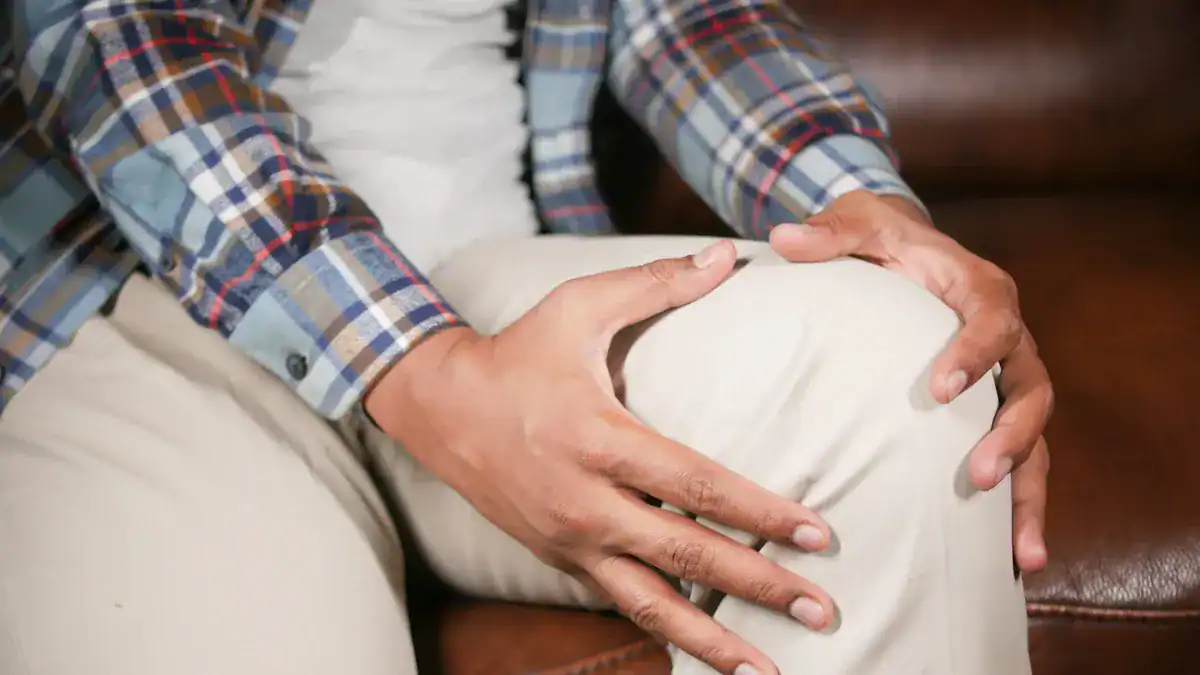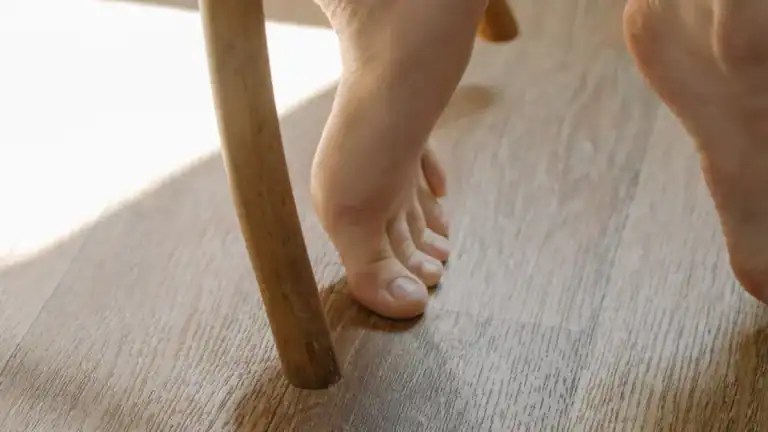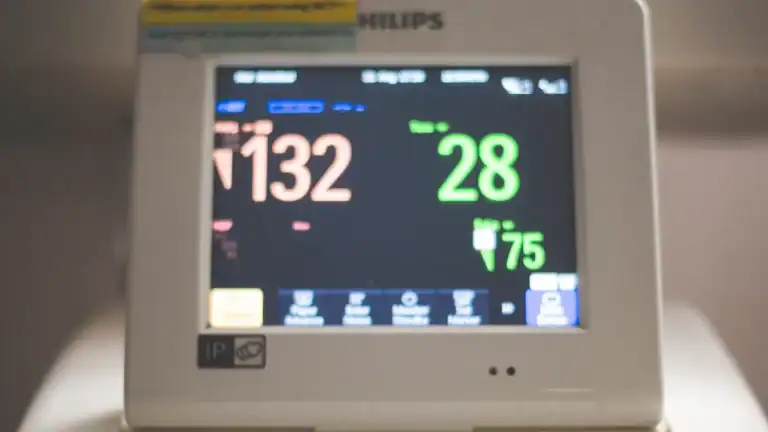
Left hip pain can significantly disrupt your daily life. You might find simple actions like prolonged sitting, walking for a long time, or even getting in and out of a car difficult. Understanding the common causes of hip pain is the first step toward finding relief. This blog explores 10 key causes of left hip pain and their corresponding solutions. It guides you toward appropriate care. If you experience chronic hip pain, identifying the root cause of hip pain helps you effectively seek treatment. For example, osteoarthritis often causes daily, dull pain and stiffness.
Key Takeaways
Left hip pain has many causes, like hip bursitis, arthritis, or muscle strains. Each cause needs a specific treatment.
Common solutions for hip pain include rest, ice, physical therapy, and changing daily activities. These help reduce pain and improve how your hip works.
Lifestyle changes, like keeping a healthy weight and doing gentle exercises, can help manage hip pain. They also prevent future problems.
See a doctor if your hip pain is severe, sudden, or comes with other symptoms like fever or numbness. Early help can prevent bigger problems.
1. Hip Bursitis

Cause: Bursae Inflammation
Hip bursitis is a common cause of left hip pain. It happens when bursae, which are small fluid-filled sacs, become inflamed. These sacs cushion your hip joint. They reduce friction between bones and soft tissues during movement. The trochanteric bursa, located on the outer part of your hip, often gets inflamed.
This irritation usually comes from too much friction or pressure. Repetitive overuse or stress on your hip is a common reason. Activities like walking, running, or changing positions put stress on this bursa. This makes it prone to inflammation.
Solution: Rest and Therapy
If you experience hip bursitis, several steps can help. A quick at-home treatment often includes rest and ice. You should avoid activities that worsen your pain.
Over-the-counter pain relievers, like NSAIDs, can also reduce inflammation and discomfort. For more persistent pain, your doctor might suggest physical therapy for hip pain. A physical therapist teaches you specific exercises. These exercises strengthen the muscles around your hip and improve flexibility. This helps reduce stress on the bursa. Sometimes, doctors recommend corticosteroid injections directly into the bursa. This can quickly reduce inflammation.
Recovery from hip bursitis usually takes about one to two months if you follow your doctor’s treatment plan. Younger people in good physical condition often recover faster. Most cases resolve within 1 to 6 months with proper care. If your pain does not improve, you should seek treatment from a healthcare professional. They can confirm the diagnosis and rule out other causes, such as osteoarthritis, which involves cartilage damage and requires different management.
2. Hip Osteoarthritis

Cause: Cartilage Degeneration
Hip osteoarthritis is a common cause of hip pain. It happens when the cartilage cushioning your hip joint wears down over time. This cartilage allows your bones to glide smoothly. When it degenerates, bones rub against each other. This causes pain, stiffness, and reduced movement. You might notice early signs of this cartilage degeneration. These include:
Pain and stiffness that is more pronounced in the morning or after sitting for a while.
Pain starting in your groin or thigh, sometimes reaching your buttocks or knee.
Increased pain after vigorous physical activity.
Stiffness in your hip joint that makes walking or bending difficult.
A ‘locking’ or ‘sticking’ feeling in the joint, sometimes with a grinding noise (crepitus) as you move. This comes from loose cartilage fragments.
A decreased range of motion in your hip, which can lead to difficulty walking and a limp.
Solution: Pain Management and Lifestyle
Managing hip osteoarthritis focuses on reducing pain and improving your quality of life. Your doctor will discuss various treatment options. Lifestyle changes are very important.
The European League Against Rheumatism (EULAR) recommends a core management plan. This includes giving you information about the disease. You learn how to pace your activities. You also get an individualized exercise program. Education about weight loss, if needed, and options to adjust mechanical loading (like footwear or assistive devices) are also part of this plan.
Exercise is effective for pain relief and helps your hip function better. It is safe and does not increase pain symptoms when done correctly. Safe joint usage, including gentle movements, is key for cartilage health. Maintaining a healthy weight is also crucial.
Extra weight puts more strain on your joints, increasing inflammation and pain. Losing even a small amount of weight can significantly reduce pressure on your hip. For example, losing just one pound can reduce pressure on lower body joints by up to six times. You can also consider other self-help strategies.
These include stopping smoking, using assistive devices, focusing on emotional wellness, and eating a healthy diet. These steps help you manage your symptoms and improve your overall well-being. If you experience persistent left hip pain, you should seek treatment from a healthcare professional. They can provide a proper diagnosis and guide your care.
3. Hip Labral Tear
Cause: Labrum Injury
Your hip joint has a ring of cartilage called the labrum. This cartilage lines the rim of your hip socket. It helps keep the ball of your thigh bone securely in place. It also acts like a seal. A hip labral tear happens when this cartilage gets damaged. This injury can result from sudden trauma or repetitive motions.
Many activities can lead to a labral tear. These include high-impact sports like skiing, snowboarding, and gymnastics. Rotational sports also contribute. Golf and ballet involve twisting motions that can cause a tear. Other activities with repetitive hip rotation, such as certain golf swings or martial arts techniques, also pose a risk. Even daily tasks like vacuuming, lifting heavy laundry baskets, or deep squatting while gardening can be among the causes.
Solution: Conservative or Surgical Options
Your doctor will discuss various options for a hip labral tear. The best treatment depends on the tear’s severity and your symptoms. Many people start with conservative methods. These include rest, physical therapy, and pain medication. Physical therapy helps strengthen the muscles around your hip. It also improves your range of motion.
Sometimes, doctors use intra-articular injections. These injections can reduce pain and inflammation. One study showed that nearly 25% of athletes could return to sports using non-operative methods. This suggests that a comprehensive non-operative approach can be effective.
However, surgery is an option if conservative treatments do not work. Arthroscopic labral repair is a common surgical procedure. Doctors perform this surgery when the tissue quality is good. Success rates for this surgery range from 68% to 82% for carefully chosen patients. If you have persistent hip pain, you should seek treatment from a healthcare professional. They can provide an accurate diagnosis and guide your care. This is important because symptoms can sometimes mimic other conditions, like early osteoarthritis.
4. Sciatica
Cause: Sciatic Nerve Compression
Sciatica happens when something presses on your sciatic nerve. This nerve is the longest in your body. It runs from your lower back, through your hips, and down each leg. When this nerve gets compressed, you can feel pain. This pain often starts in your lower back.
It then travels down your left hip and leg. You might feel a sharp, burning sensation or even numbness. Sometimes, you experience a shooting hip pain. Several conditions are common causes of this compression. These include a herniated or bulging disc in your spine.
When the gel-like center of a disc pushes out, it can press directly on the nerve. Other issues like spinal stenosis, which is a narrowing of the spinal canal, can also pinch the nerve. Age-related spinal changes, bone spurs, arthritis, and degenerative disc disease also contribute to nerve compression. In rare cases, spondylolisthesis, tumors, or bone growths can also cause sciatica.
Solution: Targeted Exercises and Relief
Relieving sciatica often involves specific exercises and other methods. The main goal of treatment is to reduce pressure on the sciatic nerve. Targeted exercises are very helpful. You can try the Knee-to-Chest Stretch.
This exercise helps relieve pressure on the sciatic nerve. It stretches your lower back and glutes. It also loosens gluteal and piriformis muscles that can press against the nerve. Another effective exercise is the Standing Hamstring Stretch. This stretch reduces tension on the sciatic nerve by lengthening tight hamstrings. Tight hamstrings can make sciatic pain worse by increasing tension in your lower back and pelvis. The Pelvic Tilt is also beneficial. This exercise strengthens your lower back muscles and improves pelvic alignment.
It stabilizes your spine and decreases the load on your lower back. This reduces pressure on the sciatic nerve. You can also use heat or cold packs to ease pain. Avoid long periods of sitting or standing. Gentle movement is often better than complete rest. If your pain continues or gets worse, you should see a doctor.
5. Tendinitis (Gluteal Tendinopathy)
Cause: Tendon Inflammation
Gluteal tendinopathy, often called tendinitis, happens when the tendons around your hip become inflamed or degenerate. These tendons connect your gluteal muscles to your hip bone.
They help you move your leg and stabilize your pelvis. When these tendons get overworked or injured, they can become painful. Several factors are common causes of this condition. You might experience it from overuse or underuse of your tendons. Putting too much force on them during physical activities can lead to this.
Tendon compression from falls or other accidents also contributes. Excess pressure on your tendons due to weight gain or obesity can be a factor. Inactivity or a sedentary lifestyle can also weaken these tendons. A wide pelvis or hip instability can increase your risk. Women over 40, especially after menopause, often experience this more. Lower back pain is also linked; as many as 1 in 3 people with lower back pain also develop hip pain from gluteal tendinopathy. This condition occurs mostly in mid-life, affecting both athletes and non-exercising individuals.
Solution: Activity Modification and Strengthening
Managing gluteal tendinopathy involves changing your activities and strengthening your muscles. The primary treatment focuses on reducing stress on the affected tendons. You should modify or minimize any activities that make your symptoms worse.
If you have pain while sleeping on your affected side, try sleeping on your back. You can also sleep on your unaffected side with two pillows between your legs. A mattress topper might also help. For pain while sitting, identify if crossed legs, low seats, or prolonged sitting worsen your symptoms. Modify your sitting position, raise your seat height, or take periodic standing breaks. If walking causes pain, track your steps.
Determine your maximum tolerable distance, then gradually increase your steps. Walking faster or taking shorter steps can reduce the time you spend on one leg. For stairs, use the railing on the opposite side of your painful hip. If it still hurts, go up one step at a time, leading with your non-painful side.
You should also modify the frequency, volume, or intensity of runs if you experience pain. Consider increasing your cadence by 5-10% to decrease the load on your glutes. Your doctor or physical therapist will guide you through specific exercises to strengthen your gluteal muscles. These exercises help improve your hip’s stability and reduce tendon strain.
6. Muscle Strain (Hip Flexor, Hamstring, Groin)
Cause: Muscle Fiber Overstretching
A muscle strain happens when you overstretch or tear muscle fibers. This often occurs in your hip flexors, hamstrings, or groin muscles.
These muscles help you move your leg and hip. Sudden movements, like sprinting or jumping, can cause a strain. Not warming up properly before exercise is another common reason. Overuse during repetitive activities also leads to these injuries. The severity of a muscle strain varies. Doctors categorize them into grades:
Grade 1 (Mild): You have minor overstretching or tearing of muscle fibers. You feel mild pain and stiffness. Your strength or mobility is minimally affected.
Grade 2 (Moderate): This involves a partial muscle tear. You experience noticeable pain, swelling, and reduced strength or range of motion.
Grade 3 (Severe): This is a complete rupture of the muscle. You feel severe pain, significant swelling, and bruising. You cannot use the affected muscle.
These are the main causes of muscle strains in your hip.
Solution: RICE and Rehabilitation
If you experience a hip muscle strain, the RICE method is your first step for treatment.
Rest: Stop the activity that caused the pain. Give your muscle time to heal.
Ice: Apply ice packs to the injured area for 15-20 minutes at a time. Do this several times a day to reduce swelling and pain.
Compression: Use a compression bandage to help reduce swelling.
Elevation: Keep your hip elevated above your heart if possible. This also helps with swelling.
After the initial pain and swelling decrease, rehabilitation is crucial. You will need gentle stretching exercises to restore flexibility. Strengthening exercises will help rebuild muscle strength. A physical therapist can guide you through these exercises. They ensure you regain full function and prevent future injuries. Do not rush your recovery. Returning to activities too soon can lead to re-injury.
7. Femoroacetabular Impingement (FAI)
Cause: Abnormal Bone Growth
Femoroacetabular impingement, or FAI, happens when extra bone grows on your hip bones. This abnormal bone growth causes your hip bones to rub against each other. This rubbing damages the joint. It can lead to pain and limit your movement.
There are different types of FAI, each with specific bone abnormalities. One type is Cam Impingement. Here, a bone spur on the ball-shaped end of your femur makes it misshapen. This causes it to collide with the hip socket, preventing smooth movement. A bony protrusion often forms along the edge of the femoral head, grinding at the cartilage. Another type is Pincer Impingement.
This occurs when your hip socket (acetabulum) excessively covers or encloses the femoral head. This usually happens along the front-top rim of the socket. This ‘over-coverage’ causes the neck of your femur to bump into the socket during hip flexion. Sometimes, you have both types. This is called Combined Impingement. It means bony overgrowths affect both the femoral head (ball) and the acetabulum (socket). These bone growths are the primary causes of FAI.
Solution: Therapy and Intervention
Managing FAI often starts with non-surgical approaches. This conservative treatment aims to reduce your pain and improve your hip function. It includes rest and patient education. You learn about your condition and how to manage it. Activity and lifestyle modifications are very important.
You should avoid positions of deep hip flexion and internal rotation. Poor postural habits, static positioning, and sitting cross-legged can worsen symptoms. Certain sports like cycling or running narrow straight trails might also cause issues. Instead, walking and swimming are often recommended. If you run, try zigzag patterns or wide courses that involve abduction and external rotation. Physical therapy is also a key part of your recovery.
A rehabilitation program addresses specific muscular imbalances. Studies show that people with FAI often have weakness in their hip muscles. These include abductors, external rotators, flexors, extensors, and adductors. Physical therapy helps strengthen these muscles. It also improves your single-leg balance. Sometimes, doctors use oral pain relievers or intra-articular hip injections to reduce pain. Non-operative management can successfully reduce pain and alleviate symptoms for up to 5 years in many cases.
8. Sacroiliac (SI) Joint Dysfunction
Cause: SI Joint Movement Issues
Your sacroiliac (SI) joint connects your sacrum (the triangular bone at the base of your spine) to your ilium (the large bones of your pelvis). SI joint dysfunction happens when this joint moves too much or too little. This abnormal motion or malalignment can lead to pain. You might experience difficulty with walking, bending, or lifting. Sleeping can also become difficult. Sometimes, you feel pain while sitting down, lying on the side of your pain, or climbing stairs. These are common indicators of SI joint issues.
The underlying causes often involve nonoptimal load transfer. This can be due to SI joint stiffness (hypomobility) or insufficient pelvic girdle stability (hypermobility). You might notice an asymmetric iliac crest height or asymmetric weight-bearing when standing. Painful catching or increased pain on the same side during the stance phase of gait can also occur. A decreased hip extension can lead to a shortened stride length on the opposite leg. Pain often occurs when you mechanically stress the joint, such as during forward bending. These issues create an aberrant sacroiliac movement pattern, which are the primary causes of your discomfort.
Solution: Manual Therapy and Injections
If you experience SI joint dysfunction, various treatments can help. Manual therapy interventions are often effective. These include high-velocity, low-amplitude (HVLA) thrust manipulation, low-velocity mobilization, soft tissue techniques, and muscle energy techniques (MET). Myofascial release and spinal manipulative therapy (SMT) are also common approaches. While manual therapy appears effective for improving disability, its efficacy for pain can vary. However, manual therapy is effective in the long term for SI joint dysfunction syndrome. Its effectiveness is further enhanced when you add specific exercises for the sacroiliac joints to the manipulation treatment. Your doctor might also suggest injections, such as corticosteroids, directly into the SI joint to reduce inflammation and pain.
9. Avascular Necrosis (Osteonecrosis)
Cause: Bone Blood Supply Loss
Avascular necrosis, also called osteonecrosis, occurs when bone tissue dies due to an inadequate blood supply. This lack of blood flow weakens the bone structure, leading to small fractures and, eventually, bone collapse. The hip joint is most commonly affected.
Solution: Supportive Care and Procedures
Treatment for avascular necrosis focuses on relieving pain, improving joint function, and preventing further bone damage.
1. Supportive Care (Early Stages)
- Rest and activity modification: Limit weight-bearing on the affected joint. Use assistive devices like crutches or walkers to reduce hip stress. Avoid prolonged standing and repetitive movements.
- Physical therapy: Strengthening and mobility exercises improve joint function and decrease pain.
- Electrical stimulation: In some cases, doctors use this to promote new bone growth.
2. Surgical Treatments (Advanced Stages)
If conservative treatments are ineffective, surgery may be needed. Options include:
- Core decompression: Reduces pressure and stimulates blood flow.
- Bone grafts: Replace damaged bone with healthy tissue.
- Joint replacement (arthroplasty): Recommended for severe or advanced cases.
10. Referred Pain (Spine or Abdomen)
Cause: Pain from Other Areas
Sometimes, the pain you feel in your left hip does not actually come from your hip joint itself. This is called referred pain. It means the pain originates from another part of your body, but you feel it in your hip. Many conditions outside your hip can be the causes of this type of pain.
Pain can come from your spine:
Pinched nerve: A nerve in your lower back can get compressed. This causes pain near your hip and down your leg. Arthritis, a herniated disc, or an injury can cause this.
Sacroiliac joint dysfunction: This happens when the joints where your lower spine meets your pelvis move incorrectly. Arthritis, infection, pregnancy, or injury can cause this.
Pain can also come from your abdomen:
Celiac disease: An allergy to gluten affects your small intestine. This causes abdominal pain.
Crohn’s disease: This causes inflammation in your digestive tract. It leads to abdominal pain.
Diverticulitis: Small pouches in your digestive system get inflamed or infected. This often causes pain on the left side of your abdomen.
Hernia: Part of your intestine pushes through a weak spot in your abdominal muscles. This causes severe pain that worsens when you cough or strain.
Kidney stones: Mineral deposits in your kidneys can cause pain that spreads to your lower abdomen and groin.
Pancreatic cancer: This cancer can cause upper abdominal pain.
Ectopic pregnancy: A fertilized egg grows outside the uterus. This leads to intense abdominal and side pain.
Endometriosis: Uterine tissue grows outside the uterus. This causes severe pelvic pain.
Menstrual pain: This can cause widespread abdominal pain.
Ovarian cyst: Fluid-filled sacs on your ovaries can cause abdominal pain.
Pelvic inflammatory disease (PID): This serious infection of the female reproductive system can cause severe abdominal pain.
Solution: Treating Underlying Condition
Finding the true source of referred pain is key to getting relief. Your doctor will perform tests to figure out if your hip pain is coming from your hip or another area. For example, they might use a McKenzie assessment.
This involves repeated spinal movements. If your symptoms improve with these movements, your pain likely comes from your spine. If not, they might check your sacroiliac joints with specific tests. These tests help rule out hip problems and pinpoint the actual source.
Imaging tests are also very helpful. An MRI can show if you have a herniated disc in your spine. X-rays can show degenerative changes in your lower back or sacroiliac joints. Once your doctor finds the real cause, they can start the right treatment. This might involve specific exercises for your back, medication for an abdominal issue, or other targeted therapies. Addressing the underlying problem will stop the shooting hip pain you feel.
When to See a Doctor for Hip Pain
Recognizing Urgent Symptoms
You might wonder when your hip pain needs professional attention. Some symptoms signal an urgent need for medical care. If you experience severe left hip pain after a fall or injury, seek immediate help. This is especially true if you cannot walk or put weight on your leg. You should also watch for tingling or numbness in your hip or leg after an injury.
Other urgent signs include:
Severe, sudden hip pain that started without a known injury.
A swollen hip that feels hot to the touch.
Changes in skin color around your hip.
Hip pain accompanied by a fever, feeling generally unwell, or feeling hot and shivery.
Intense pain that disrupts your sleep.
Sudden swelling or bruising around the hip.
Difficulty standing or muscle weakness in the leg.
If you have these symptoms, do not delay. You need prompt medical evaluation.
Seeking Professional Guidance
Knowing when to see a doctor for hip pain is crucial for your health. Delaying professional guidance can lead to bigger problems. A minor muscle strain can worsen into a chronic condition. Untreated hip fractures can escalate and may require surgery. Conditions like osteoarthritis also worsen over time. Early diagnosis and treatment can improve your long-term quality of life. It can also delay the need for hip replacement surgery.
Ignoring hip dysfunction can also cause other injuries. You might develop pain in your lower back, knees, or the opposite hip. This happens because your body changes how you walk or stand to compensate for the hip pain. Addressing the initial hip issue helps prevent these secondary problems. Untreated hip pain can become chronic. This impacts your mobility and overall quality of life. It can also be a symptom of a more serious underlying condition. This condition requires prompt medical attention. Therefore, if you have persistent hip pain, you should seek treatment to understand its causes and get proper care.
Left hip pain stems from many potential causes, from osteoarthritis to muscle strains. Each of these causes requires specific treatment. Understanding the common causes of hip pain is vital. An accurate diagnosis helps you find effective relief and improves your quality of life. Do not try to diagnose yourself. Instead, consult a healthcare professional for personalized advice. They can help you find the root cause of hip pain and guide you to seek treatment.




